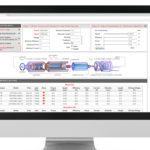Drives and controllers are key components in any motion system. A drive accepts commands from a motion controller and converts these signals into high current signals to drive a motor. So, how to connect a drive to a controller?
Manufacturers offer a range of options for drive and controller connectivity. These typically break down into stand-alone components that can be connected together to meet specific design requirements as well as integrated products, with the drive and controller integrated into one package.

The fairly common integrated drive+controller (or drive+controller and servo motor) has internal connections between all the components. There is usually one external connection, often to a network bus, that ties individual units together. Common examples of this are such integrated units controlling individual axes on a machine.

The most common way to connect stand-alone drives to controllers is via I/O connections or common networks for motion control applications such as EtherCAT, SERCOS, PROFINET or others. Which network is used depends on factors such as the speed of the application, system complexity, or the need for highly synchronized motion across multiple axes.







Leave a Reply
You must be logged in to post a comment.